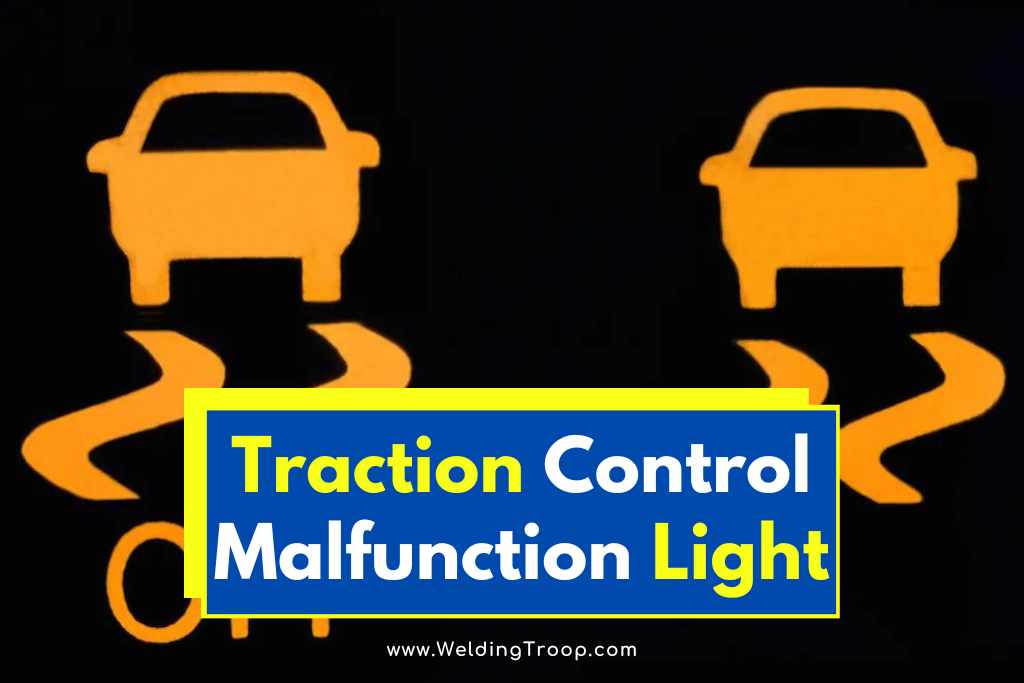The traction control system (TCS) is a vital safety feature in modern vehicles that helps maintain grip and stability in slippery conditions.
When the TCS detects wheel slippage, it automatically adjusts the power distribution to the wheels to prevent skidding or sliding. To indicate the status of the TCS, a traction control light is present on the dashboard.
In this comprehensive guide, we will explore the meaning of the traction control light, its causes, and the safety implications of driving with the light on.
Table of Contents
What Does the Traction Control Light Mean?
The traction control light serves as an indicator of the TCS status. In normal conditions, the light should come on briefly during the vehicle’s startup process and then turn off.
This is a system check to ensure that the TCS is functioning properly. However, if the light stays on or illuminates while driving, it may indicate a problem with the TCS.
Common Causes of an Illuminated Traction Control Light
There are several common reasons why the traction control light may come on:
1. Temporary Loss of Traction
In certain weather conditions, such as rain, snow, or icy roads, the TCS may engage to assist the vehicle in maintaining traction.
The traction control light may come on temporarily during these situations to indicate that the system is actively working to keep the wheels from slipping.
This is a normal operation of the TCS and does not indicate a malfunction.
2. Faulty Wheel Speed Sensor
The TCS relies on wheel speed sensors to monitor the rotational speed of each wheel. If a wheel speed sensor malfunctions or its wiring becomes damaged, it can disrupt the communication between the sensor and the TCS computer.
This can result in the traction control light illuminating and staying on. A faulty wheel speed sensor should be diagnosed and replaced by a qualified mechanic.
3. Malfunctioning Steering Angle Sensor
The steering angle sensor is another important component of the TCS system. It detects the angle of the steering wheel and provides information to the TCS computer.
If the steering angle sensor malfunctions, it may falsely indicate the vehicle’s direction of travel, leading to an illuminated traction control light. Proper diagnosis and repair of the steering angle sensor are necessary to resolve this issue.
4. Wiring Damage
Damage to the wiring connecting the TCS components, including the wheel speed sensors and the TCS computer, can cause the traction control light to come on.
Wiring damage can occur due to exposure to rough road conditions or other external factors. Repairing or replacing the damaged wiring is essential to restore proper TCS functionality.
5. ABS System Malfunction
The anti-lock braking system (ABS) and the traction control system often share components and sensors. If there is a fault in the ABS system, it may trigger the traction control light to illuminate as well. In such cases, it is important to have the ABS system inspected and repaired by a qualified mechanic to ensure both systems are functioning correctly.
Read also >> Traction Control Malfunction (Here Is What To Do)
Is it Safe to Drive with the Traction Control Light On?
The safety implications of driving with the traction control light on depend on the underlying cause of the illuminated light. Here are some scenarios to consider:
Driving with Temporary Loss of Traction
When the traction control light comes on in response to low-traction road conditions, such as rain or snow, it is generally safe to continue driving.
The TCS is actively engaged to help maintain traction, providing an extra layer of stability and control. However, it is still important to exercise caution and adjust your driving behavior to suit the road conditions.
Driving with a Faulty Wheel Speed Sensor or Steering Angle Sensor
If the traction control light remains on due to a faulty wheel speed sensor or steering angle sensor, it is not safe to drive without proper diagnosis and repair.
These sensors play crucial roles in the TCS system, and their malfunction can compromise the effectiveness of the traction control system.
It is recommended to have the vehicle inspected by a qualified mechanic as soon as possible.
Driving with Wiring Damage or ABS System Malfunction
Driving with wiring damage or an ABS system malfunction can also pose safety risks. These issues can affect the overall functionality of the TCS and ABS systems, potentially leading to reduced braking performance and compromised traction control.
It is important to have the vehicle inspected and repaired by a professional to ensure safe operation on the road.
Resetting the Traction Control Light
If the traction control light remains on even after addressing the underlying issue, it may be necessary to reset the light. Here are the general steps to reset the traction control light:
- Obtain an OBD-II Scanner: Purchase or rent an OBD-II scanner, which allows you to access and reset diagnostic trouble codes (DTCs) in your vehicle’s onboard computer.
- Locate the Diagnostic Link Connector (DLC): The DLC is typically located under the dashboard on the driver’s side. Plug the OBD-II scanner into the DLC.
- Reset the Traction Control Light: Follow the instructions provided with the OBD-II scanner to navigate the menu options and reset the traction control light.
It is important to note that resetting the traction control light without addressing the underlying issue may result in the light reappearing.
Therefore, it is recommended to have the vehicle inspected and repaired to ensure proper functionality of the TCS.
Conclusion
The traction control light serves as a valuable indicator of the TCS status and potential issues within the system.
Understanding the meaning of the traction control light, its common causes, and the safety implications of driving with the light on is essential for maintaining a safe and reliable vehicle.
If the traction control light remains illuminated, it is important to have the vehicle inspected and repaired by a qualified mechanic to ensure the proper functioning of the TCS and overall safety on the road.

